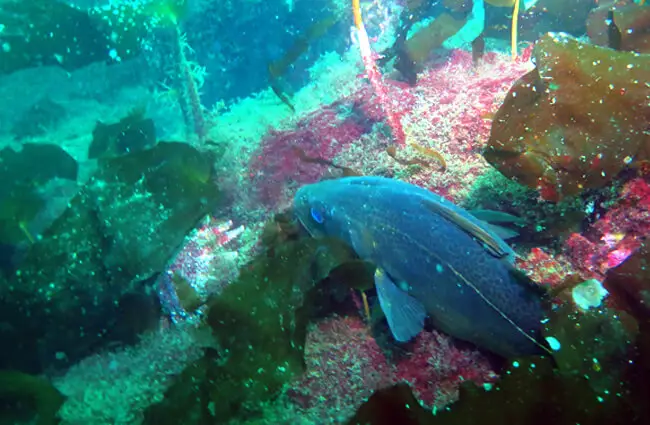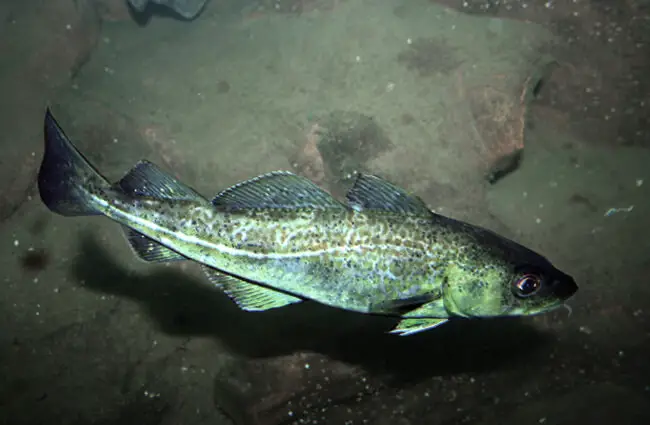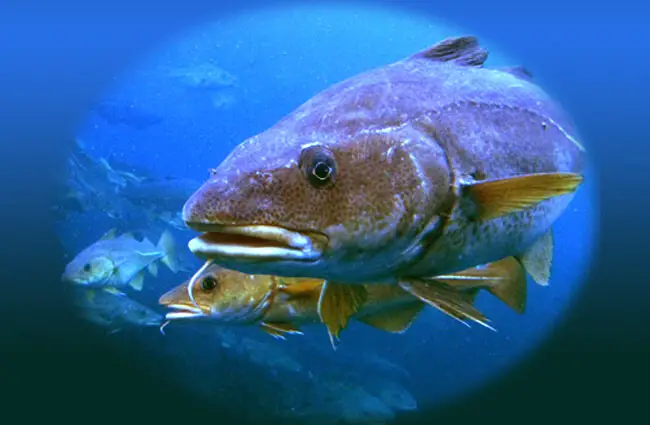The Mighty Cod: A Deep Dive into a Marine Marvel
Beneath the waves of the world’s northern oceans swims a fish of immense ecological and historical significance: the Cod. Far more than just a staple on dinner plates, this fascinating creature is a cornerstone of marine ecosystems, a testament to evolutionary resilience, and a species deeply intertwined with human civilization. From its impressive migrations to its unique adaptations, the Cod offers a captivating glimpse into the intricate life of our planet’s aquatic realms. Join us on an exploration of this remarkable fish, uncovering its secrets from the depths of its habitat to its enduring legacy.

Getting to Know Cod: Basic Biology and Habitat
Cod refers primarily to two major species: the Atlantic Cod (Gadus morhua) and the Pacific Cod (Gadus macrocephalus). While distinct, they share many characteristics that define them as members of the Gadidae family. These are robust, bottom-dwelling fish, typically recognized by their elongated bodies, three dorsal fins, two anal fins, and a prominent barbel on their chin, which acts as a sensory organ for foraging along the seabed.
Where Do Cod Call Home?
Cod are cold-water specialists, thriving in the chilly, nutrient-rich waters of the northern hemisphere. Their distribution is vast, reflecting their adaptability to various marine environments.
- Atlantic Cod: These giants inhabit the North Atlantic Ocean, ranging from the Arctic Circle down to the coasts of North Carolina in the west and the Bay of Biscay in the east. Key populations are found around the Grand Banks of Newfoundland, the Gulf of Maine, the Barents Sea, and off the coasts of Iceland and Norway. They prefer depths ranging from shallow coastal waters down to 600 meters (2,000 feet), often congregating around rocky reefs, sandy bottoms, and areas with strong currents.
- Pacific Cod: Found across the North Pacific Ocean, their range extends from the Bering Sea and Gulf of Alaska down to the coasts of California and Japan. Like their Atlantic cousins, they favor cold, deep waters, typically inhabiting depths between 50 and 500 meters (160 to 1,600 feet), often found on muddy or sandy substrates.
Both species are demersal, meaning they live on or near the seabed, though they can also be found in mid-water columns when pursuing prey. Their preferred temperature range is generally between 0 and 10 degrees Celsius (32 to 50 degrees Fahrenheit).

What’s on the Menu? The Cod Diet
Cod are opportunistic and voracious predators, playing a crucial role in their food webs. Their diet shifts significantly as they grow, reflecting their increasing size and hunting capabilities.
- Juvenile Cod: Younger cod primarily feed on small crustaceans, such as copepods and amphipods, as well as marine worms and other benthic invertebrates.
- Adult Cod: As they mature, their diet expands dramatically. Adult cod are formidable predators, consuming a wide array of fish, including herring, capelin, sand eels, haddock, and even smaller cod. They also feast on larger crustaceans like shrimp and crabs, squid, and other bottom-dwelling invertebrates. Their chin barbel is essential for detecting prey hidden in the sediment.
Fascinating Facts About Cod
- Longevity: Cod can live for over 20 years, with some individuals recorded reaching ages of 25 years or more.
- Size: While typically caught at lengths of 50-70 cm (20-28 inches), Atlantic Cod can grow much larger, with records of individuals exceeding 1.5 meters (5 feet) in length and weighing over 90 kg (200 pounds).
- Camouflage Masters: Their mottled brown, green, or grey coloration allows them to blend seamlessly with the rocky or sandy seabed, providing excellent camouflage from both predators and prey.
- Migration: Many cod populations undertake extensive seasonal migrations, traveling hundreds or even thousands of kilometers between feeding and spawning grounds.
- Sound Communication: Cod are known to produce sounds, particularly during spawning season, to attract mates. These sounds are generated by vibrating muscles against their swim bladder.

The Deeper Science: Evolution, Reproduction, and Ecosystem Role
A Glimpse into Cod’s Evolutionary Journey
The Gadidae family, to which Cod belong, has a long and successful evolutionary history. Fossil evidence suggests that early gadiform fish emerged during the Eocene epoch, around 50 million years ago. Cod, as we know them today, are thought to have diversified and spread across the northern oceans over millions of years, adapting to the cold, productive waters. Their success can be attributed to several key evolutionary traits:
- High Fecundity: Producing millions of eggs increases the chances of offspring survival in a challenging marine environment.
- Generalist Diet: Their ability to consume a wide range of prey makes them resilient to fluctuations in specific food sources.
- Cold Adaptation: Physiological adaptations allow them to thrive in low temperatures, giving them access to vast, nutrient-rich northern waters.
- Sensory Acuity: The chin barbel and well-developed lateral line system provide excellent sensory input for navigating and hunting in dark, deep waters.
The Mating and Reproduction Process
Cod are broadcast spawners, a reproductive strategy characterized by the release of eggs and sperm directly into the water column. This process is a spectacular event, often involving large aggregations of fish.
- Spawning Grounds: Cod migrate to specific spawning grounds, often in shallower, coastal waters or on offshore banks, where conditions are favorable for egg and larval development. Spawning typically occurs in late winter or early spring.
- Courtship and Spawning: Males often initiate courtship, using vocalizations and displays to attract females. During spawning, females release millions of tiny, buoyant eggs, which are then fertilized by the males’ sperm. A single large female Atlantic Cod can release up to 9 million eggs in a season, though typically it is in the range of 2-5 million.
- Larval Development: The fertilized eggs drift in the ocean currents as plankton. After hatching, the larvae are also planktonic, feeding on microscopic organisms. They are highly vulnerable to predation and environmental conditions during this stage.
- Juvenile Stage: As they grow, the young cod settle to the seabed, often in shallower nursery areas, where they continue to develop and grow, gradually adopting the adult diet and behavior.
Cod’s Contribution to the Ecosystem and Interaction with Other Animals
Cod are integral components of their marine ecosystems, acting as both predators and prey, thus influencing the structure and dynamics of their food webs.
- Top Predator (in their niche): Adult cod are significant predators of smaller fish and invertebrates, helping to regulate populations of species like herring, capelin, and various crustaceans. This predation can have cascading effects throughout the ecosystem.
- Prey for Larger Predators: While adults are formidable, juvenile cod and their eggs and larvae are a vital food source for a wide range of marine animals, including other fish, seabirds, and marine mammals like seals and whales.
- Benthic Link: As bottom-feeders, cod help to transfer energy from the seabed to higher trophic levels in the water column. Their foraging activities can also disturb sediments, potentially affecting benthic invertebrate communities.
- Habitat Engineers (indirectly): By consuming certain species, they can indirectly influence the health and composition of marine habitats.
Cod and Humanity: A Shared History and Future
Cod’s Contribution to Human Culture and History
Few fish have played as pivotal a role in human history and culture as Cod. For centuries, it has been a cornerstone of diets, economies, and exploration.
- Economic Powerhouse: The abundance of cod in the North Atlantic fueled the economies of nations like Norway, Iceland, and particularly Newfoundland. The dried and salted cod trade was a major driver of transatlantic commerce for hundreds of years, facilitating exploration and settlement.
- Culinary Staple: Cod has been a primary source of protein for countless generations, especially in Europe and North America. Its mild flavor and flaky texture make it incredibly versatile, appearing in dishes from fish and chips to bacalao.
- Catalyst for Exploration: The rich cod fishing grounds off North America were a major draw for European explorers and fishermen, influencing the colonization and development of coastal regions.
![Fisherman showing off his catch, cod Photo by: David Csepp, NMFS/AKFSC/ABL [Public domain]](https://animals.net/wp-content/uploads/2020/01/Cod-5-650x425.jpg)
Human Interaction and Conservation Challenges
The very abundance that made cod so valuable also led to its greatest challenge: overfishing. Intensive fishing pressure, particularly with the advent of modern fishing technologies, led to dramatic declines in many cod stocks, most famously the collapse of the Grand Banks cod fishery in the early 1990s.
- Overfishing: This remains the primary threat to cod populations globally. Depleted stocks struggle to recover, impacting both the ecosystem and the livelihoods of fishing communities.
- Habitat Degradation: Bottom trawling, a common fishing method for cod, can damage sensitive seabed habitats, including coral and sponge communities that serve as important nursery grounds.
- Climate Change: Warming ocean temperatures can affect cod distribution, spawning success, and the availability of their prey, adding another layer of complexity to conservation efforts.
- Pollution: Marine pollution, including plastics and chemical contaminants, can also impact cod health and reproduction.
Conservation efforts now focus on sustainable fishing practices, establishing marine protected areas, and implementing quotas to allow stocks to rebuild. Consumer choices, supporting certified sustainable seafood, also play a vital role.
Practical Insights: Finding, Observing, and Caring for Cod
For the Animal Lover: How to Find and Observe Cod in the Wild
Encountering a wild cod can be a thrilling experience. While not typically found in shallow, easily accessible waters, there are ways to observe these magnificent fish:
- Scuba Diving or Snorkeling: In areas with healthy cod populations, particularly around rocky reefs or kelp forests in colder waters, divers may encounter cod. Look for them near the seabed, often resting or slowly moving.
- Fishing Charters: Many coastal communities offer fishing charters that target cod. While the primary goal is often to catch them, it provides an opportunity to see them up close (if released) and learn about their habitat from experienced guides.
- Aquariums and Marine Centers: For a guaranteed sighting, visit a reputable aquarium. Many institutions feature cod in their exhibits, offering a chance to observe their behavior in a controlled environment.
When observing any marine life, always practice responsible wildlife viewing: maintain a respectful distance, avoid disturbing their natural behavior, and never touch or feed wild animals.
For the Zookeeper: Caring for Cod in Captivity
Caring for cod in an aquarium setting requires a deep understanding of their natural history and specific environmental needs.
Key Tasks for Zookeepers:
- Water Quality Management: Maintaining pristine, cold water is paramount. This includes precise control of temperature (typically 4-10°C or 39-50°F), salinity, pH, dissolved oxygen, and ammonia/nitrate levels. Robust filtration systems are essential.
- Diet and Feeding: Provide a varied diet of high-quality marine fish (e.g., herring, capelin), squid, and crustaceans. Feeding schedules should mimic natural foraging patterns, and food items should be appropriately sized. Monitor individual intake to ensure all fish are feeding adequately.
- Habitat Enrichment: Design exhibits that replicate their natural benthic environment with rocky structures, sandy or gravel substrates, and appropriate lighting. Providing hiding spots and varied topography can reduce stress and encourage natural behaviors.
- Health Monitoring: Regular observation for signs of disease, injury, or stress is crucial. This includes checking for changes in swimming patterns, skin lesions, fin erosion, or appetite loss. Proactive veterinary care and quarantine protocols for new arrivals are standard.
- Tank Mates: Carefully select tank mates that are compatible in terms of size, temperament, and environmental requirements. Avoid aggressive species or those that might outcompete cod for food.
What to Avoid:
- Warm Water: Cod are highly sensitive to elevated water temperatures, which can quickly lead to stress, disease, and mortality.
- Overcrowding: Too many fish in an exhibit can lead to poor water quality, increased aggression, and stress.
- Inappropriate Diet: A monotonous or nutritionally deficient diet can lead to health problems.
- Sudden Environmental Changes: Rapid fluctuations in water parameters can be highly detrimental.
- Stressors: Loud noises, excessive vibrations, or constant human presence directly at the tank can cause stress.

The Enduring Legacy of the Cod
From the depths of the ocean to the pages of history books, the Cod stands as a testament to the power and fragility of marine life. Its journey through evolution, its intricate role in the ecosystem, and its profound impact on human civilization paint a picture of a truly remarkable species. As we continue to learn more about these fascinating fish, the call for their protection grows stronger. Understanding the Cod is not just about appreciating a single species, but about recognizing the interconnectedness of our planet’s oceans and our responsibility to safeguard them for future generations. Let the story of the Cod inspire us to be better stewards of the marine world.

![Red Angus Closeup of a beautiful Red Angus cowPhoto by: U.S. Department of Agriculture [pubic domain]https://creativecommons.org/licenses/by/2.0/](https://animals.net/wp-content/uploads/2020/03/Red-Angus-4-238x178.jpg)




![Red Angus Closeup of a beautiful Red Angus cowPhoto by: U.S. Department of Agriculture [pubic domain]https://creativecommons.org/licenses/by/2.0/](https://animals.net/wp-content/uploads/2020/03/Red-Angus-4-100x75.jpg)

